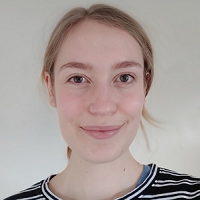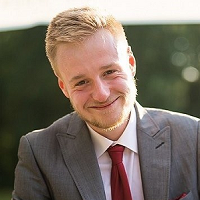The Integration of Knowledge Sources to Support Cardiovascular Disease Diagnosis
 Student: Hanadi Aldosari
Student: Hanadi Aldosari
Supervisory Team: Prof. Frans Coenen, Department of Computer Science; Dr. Yalin Zheng, Eye and Vision Science; and Prof. Gregory Lip, Centre for Cardiovascular Science and Liverpool Heart & Chest Hospital.
Cardiovascular disease patient care generates a large amount of biomedical and clinical data. The processing and analysis of this data so as to make predictions about disease progression therefore presents a challenge. One mechanism whereby this challenge can be addressed is by providing support using the tools and techniques of machine learning. However, this presents another challenge in that the data is heterogeneous in nature; the data is in many formats. Current solutions process each data format independently; any potential relationships across the data formats is therefore lost. This research project seeks to provide an alternative solution investigating te idea of adopting a unifying representation that sits over the heterogeneous data sources whereby a single prediction model can be generated. The proposed unifying representation is a feature vector representation which is compatible with a wide range of prediction model generators. The question is then how best to extract appropriate features from the data sources so as the construct the desired homogeneous feature vector representation. Different approaches such as 1D and 2D motifs are being considered.
Machine learning approaches for the clinical diagnosis of autoimmune disease
 Student: Hannah Kockelbergh
Student: Hannah Kockelbergh
Supervisory Team: Dr Anna Fowler, Department of Biostatistics; Dr Peter Green, Department of Mechanical, Materials and Aerospace Engineering; Prof Andrea Jorgensen, Department of Biostatistics; and Dr Elizabeth Soilleux, Addenbrooks Hospital, Cambridge.
In response to a new immune threat, B- and T-cells with specific receptors proliferate and immunological memory is established. An individual's repertoire of immune cells contains information about previous immune responses and has the potential to indicate immune status such as autoimmune disease. B- or T- cell receptor repertoires may be examined in detail by sequencing genetic material of immune cells from tissue or blood, although characteristics indicative of immune status may be challenging to identify or unknown. This project focuses on development of novel diagnostics using immune repertoire sequencing data, in particular for coeliac disease which is an autoimmune condition. Machine learning classification shows promise to achieve this goal. Importantly, interpretation of any diagnostics developed could aid in understanding of disease mechanisms, allow identification of biomarkers, and enable trust in their output.
Machine Learning for the Automated Segmentation of Paediatric Brain Tumours on Multimodal MRI Data
Student: Ramandeep Kang
Supervisory Team: Dr Martin Gairing, Department of Computer Science; Prof Andrew Jones, Institute of Integrative Biology; Dr Antony McCabe, Computational Biology Facility; and Dr Avula Shivaram, Alder Hey Children's NHS Foundation Trust.
After a patient with a brain tumor has undergone an MRI scan, a clinician is expected to manually segment the tumorous tissue from the healthy tissue in order to understand the tumor's progression or regression. This is an extremely laborious task for the clinicians. However, given the success of Deep Convolutional Neural Networks (CNNs) in computer vision tasks, there is a strong drive to automate the segmentation process using deep learning. Although much work has been done on segmenting gliomas in the adult brain, little work has been done on segmenting tumors in the pediatric brain. This project will focus on tackling some of the more nuanced elements of pediatric brain tumors and their challenges to computer vision. The final aim of the project would be to design a software interface which will provide the pediatric oncology clinician with an automated segmentation of the tumor region on an MRI scan.
Towards the Hospice Without Walls: How Can Robotics and Human Centred Design Facilitate Enhanced Independence and Alternative Access in Future Palliative Care Scenarios?
 Student: Andrew Tibbles
Student: Andrew Tibbles
Supervisory Team: Dr Farnaz Nickpour, Division of Industrial Design; Dr Paolo Paoletti, School of Engineering; Dr Sebastiano Fichera, School of Engineering; Dr Laura Chapman, Marie Curie Hospice, Liverpool; and Amara Nwosu, Marie Curie Hospice, Liverpool.
Most hospices in the UK are reducing bed numbers and other services, some are closing altogether. The major problem for the hospice sector is that it is expensive and essentially unsustainable in its current form, especially in the face of an ageing population. Alternative and enhanced scenarios of hospice care are needed with a key focus on improving patient independence, and redefining patient access. In this context this PhD programme of work is directed at resolving three research questions: (i) How can Robotics and Human Centred Design help develop the concept of the "Hospice without Walls"? (ii) How might we enable people to remain as independent as possible, for as long as possible, using robotics in new sustainable hospice care scenarios? and (iii) How might we extend future hospice care, beyond the buildings them selves, into the community using robotics?
Isometry invariants of periodic point sets
 Student: Daniel Widdowson
Student: Daniel Widdowson
Supervisory Team: Dr. Vitaliy Kurlin, Department of Computer Science and Materials Innovation Factory (MIF); Prof Andy Cooper, Materials Innovation Factory (MIF); and Dr Angeles Pulido, Cambridge Crystallographic Data Centre.
The structure of solid crystalline materials is often described with a "motif" of atomic positions inside a "unit cell" which periodically repeats. This representation is intuitive but highly ambiguous; one crystal can be equivalently represented in many different ways. A consequence is that crystal structure prediction algorithms yield many more structures than is necessary, many of which are similar or equivalent, but there is no fast way to remove the duplicates. We are developing "isometric invariants" based on inter-point distances, which provably have properties required by a sensible solution to this problem. Our tools are fast enough to consider collections of thousands of crystals, but nuanced enough to measure similarity in a way that aligns with well-established methods.
Back to: Study